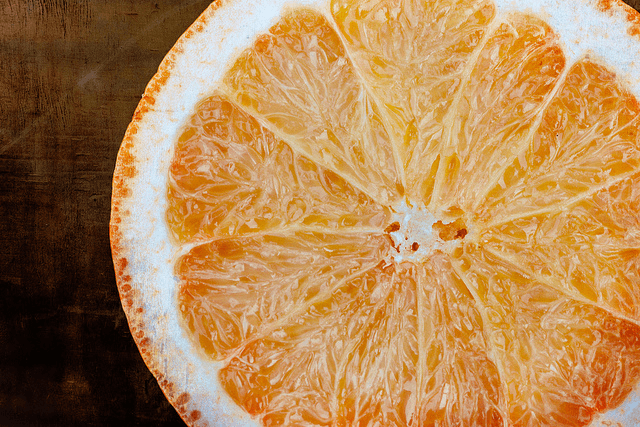You’ve probably been administered a drug sometime through your life via mouth, nose, or injection. What if I told you that delivery by grapefruit is also a possibility? Yes, a grapefruit. That bittersweet tasting fruit is not only fully packed with anti-oxidants but is also fully equipped to deliver drugs to your body.
Image Source: Chris Stein
Although it may sound futuristic, nanoparticle technology is not a brand new field, and, since its invention, research has proven its effectiveness in administering drugs. In 2009, a study was published about an experiment that showcased the effectiveness of using nanoparticles to deliver therapeutics (erectogenic agents) that targeted erectile dysfunction. So what makes these grapefruit nanoparticles so novel if this technology has been around? Unlike the early nanoparticles, grapefruit nanoparticles are produced through natural substances. They have shown to retain the effectiveness of nanoparticle delivery while potentially providing a safer alternative form of the technology.
Grapefruit nanoparticles were first tested in a study where scientists created grapefruit derived nano-vectors (small transport systems) to administer chemotherapeutic agents, proteins, and other cancer fighting substances to the various cells. They discovered that not only could these particles target specific tissue with folate receptors (these receptors are expressed on many tumor-types), they also successfully inhibited tumor growth in mice and could not cross the placental barrier in pregnant mice. Overall, the experiment demonstrated the specificity, safety, efficiency of delivering drugs using grapefruit nano-vectors.
Even with all the studies showcasing the effectiveness of grapefruit as a vector for drug delivery, many of us may still be concerned with the idea of using food to deliver drugs. Aside from side-effects, drug-food interaction is one of the main dilemmas we often take into consideration when we are prescribed medicine.
When drugs were taken followed by consumption of grapefruit, the drug-food interaction has been shown to cause either less absorption of the drug or more absorption of the drug than necessary. However, with this nanoparticle technology, the natural lipid portion is manipulated from the grapefruit to combine with the drug prior to administration, thereby decreasing the chances of any drug-food interactions while increasing target efficiency.
Image Source: Andrew Brookes
Further research is needed to determine what potential side effects using grapefruit as a drug delivery vehicle can occur but for the most part natural is usually a better alternative than synthetic. Grapefruit just may be the new face of drug delivery.
Feature Image Source: Grapefruit by Sonny Abesamis










